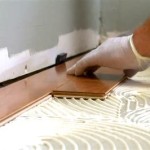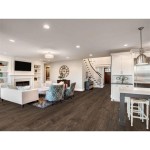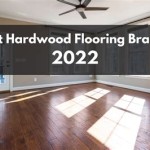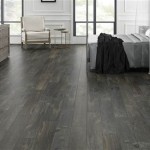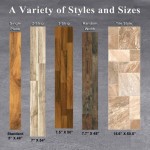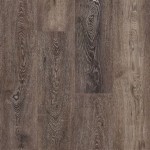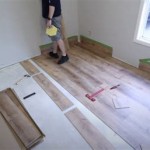How Much Does Hardwood Floor Installation Cost?
Installing hardwood floors is a significant investment that can enhance the value and aesthetic appeal of a property. Understanding the various factors that influence the overall cost is crucial for budgeting and planning a successful flooring project. This article provides a comprehensive overview of the expenses associated with hardwood floor installation, breaking down the different components and offering insights into how to manage costs effectively.
The final price of hardwood floor installation is not a fixed number. It fluctuates based on the type of wood chosen, the size of the area to be covered, the complexity of the installation process, and regional labor rates. Additionally, preparation work, such as removing existing flooring and leveling the subfloor, can significantly impact the final cost. Therefore, obtaining multiple quotes from reputable flooring contractors is essential for gaining an accurate estimate.
Hardwood flooring is broadly categorized into solid hardwood and engineered hardwood. Solid hardwood consists of planks milled from a single piece of wood. This type is known for its durability and longevity. Engineered hardwood, on the other hand, is constructed from multiple layers of wood veneer bonded together with a core of plywood or high-density fiberboard. Engineered hardwood is more resistant to moisture and temperature fluctuations, making it suitable for installation in basements and other areas where solid hardwood may not be ideal.
The cost of the hardwood material itself is a primary factor in determining the overall expense. Solid hardwood generally commands a higher price than engineered hardwood due to its inherent properties and manufacturing process. Exotic wood species, such as Brazilian cherry or tigerwood, are typically more expensive than domestic options like oak or maple. The grade of the wood also plays a role, with higher grades featuring fewer imperfections and a more uniform appearance.
Beyond material costs, labor expenses constitute a significant portion of the total installation price. Labor rates vary depending on geographic location, the experience of the installation crew, and the complexity of the job. Intricate patterns, such as herringbone or parquet, require more skill and time, resulting in higher labor costs. The condition of the subfloor also impacts labor expenses, as uneven or damaged subfloors may necessitate additional preparation work.
The installation process can be further divided into several distinct stages, each with its own associated costs. These stages include removing existing flooring, preparing the subfloor, installing the hardwood planks, sanding and finishing the floor, and applying protective coatings. Each stage requires specific tools, materials, and expertise, all of which contribute to the overall project budget.
Material Costs: Solid vs. Engineered Hardwood
The selection between solid and engineered hardwood directly influences the overall cost of the project. Solid hardwood, being a single piece of wood, is typically more expensive per square foot compared to engineered hardwood. The price difference can range from a few dollars to significantly more, depending on the species, grade, and width of the planks. For example, a basic oak solid hardwood might cost $5 to $8 per square foot, while a high-end exotic species could reach $15 or more per square foot.
Engineered hardwood, with its multi-layered construction, offers a more budget-friendly alternative. Prices for engineered hardwood can range from $3 to $10 per square foot, depending on the thickness of the veneer, the quality of the core material, and the species of wood used for the top layer. While engineered hardwood may be less expensive upfront, it's important to consider the long-term value and durability of each option. Solid hardwood, when properly maintained, can be refinished multiple times, extending its lifespan significantly. Engineered hardwood, depending on the thickness of the veneer, may only be refinished once or twice.
Furthermore, the type of finish applied to the hardwood flooring can impact the material cost. Prefinished hardwood, which comes with a factory-applied finish, is generally more expensive than unfinished hardwood. However, prefinished hardwood can save on labor costs, as it eliminates the need for sanding and finishing on-site. Unfinished hardwood allows for greater customization of the stain and finish, but it requires additional time and expense for these processes.
Beyond the cost of the wood itself, additional materials such as underlayment, adhesives, and fasteners must be factored into the budget. Underlayment provides a moisture barrier and sound insulation, while adhesives and fasteners secure the hardwood planks to the subfloor. The type and quantity of these materials will depend on the specific installation method and the condition of the subfloor.
Labor Costs: Preparation and Installation
Labor costs represent a substantial portion of the total hardwood floor installation expense. These costs encompass the removal of existing flooring, the preparation of the subfloor, the installation of the hardwood planks, and the finishing of the floor. The complexity of the job, the size of the area, and the experience of the installation crew all influence labor rates.
Removing existing flooring can range from a simple carpet removal to a more complex tile or vinyl removal. The cost of removing the old flooring will depend on the type of flooring, the method of removal, and any disposal fees. Preparing the subfloor is a critical step in ensuring a successful hardwood floor installation. An uneven or damaged subfloor can lead to problems such as squeaking, buckling, and uneven wear. Subfloor preparation may involve leveling the subfloor with self-leveling compound, repairing cracks or holes, and ensuring that the subfloor is clean and dry.
The installation of the hardwood planks can be done using various methods, including nail-down, glue-down, and floating installations. Nail-down installations are typically used for solid hardwood floors, while glue-down installations are often used for engineered hardwood floors. Floating installations involve interlocking the hardwood planks together without attaching them to the subfloor. The choice of installation method will depend on the type of hardwood, the subfloor material, and the desired level of stability.
Sanding and finishing the hardwood floor is a crucial step in achieving a smooth and durable surface. Sanding removes any imperfections and creates a uniform surface for the finish. The finish protects the wood from scratches, stains, and moisture. The cost of sanding and finishing will depend on the number of coats of finish applied and the type of finish used. Water-based finishes are generally more expensive than oil-based finishes, but they offer better durability and lower VOC emissions.
Additional Costs and Considerations
Beyond the core material and labor expenses, various additional costs can impact the overall hardwood floor installation budget. These costs may include furniture removal and replacement, baseboard and trim installation, and unexpected repairs or modifications.
Moving furniture out of the installation area can be a significant undertaking, especially for large or heavy items. Some flooring contractors include furniture removal as part of their service, while others charge an additional fee. It's important to clarify this aspect of the project upfront to avoid any surprises.
Baseboards and trim provide a finished look to the hardwood floor and protect the walls from damage. Installing new baseboards and trim or replacing existing ones can add to the overall cost of the project. The cost will depend on the type of baseboard and trim selected and the complexity of the installation.
Unexpected repairs or modifications can arise during the installation process. For example, hidden plumbing or electrical issues may require additional work to be done before the hardwood floor can be installed. It's wise to set aside a contingency fund to cover any unforeseen expenses that may arise.
The cost of hardwood floor installation can also vary depending on the geographic location. Labor rates and material costs tend to be higher in urban areas compared to rural areas. Obtaining multiple quotes from local flooring contractors is essential for getting an accurate estimate of the cost in a specific area.
Finally, consider the long-term maintenance and care of the hardwood floor. Regular cleaning and maintenance can help to extend the life of the floor and prevent costly repairs. Investing in high-quality cleaning products and following the manufacturer's recommendations for care can help to keep the hardwood floor looking its best for years to come.

Hardwood Flooring Cost 2024 Per Square Foot Mk

Average Hardwood Flooring S In 2024 Forbes Home

Hardwood Flooring Installation Costs 2024

How Much Does Flooring Installation Cost 2024 Guide

Hardwood Floor Installation Cost 2024 Per Sq Ft Urban Customs Az

How Much Does Wooden Floor Installation Cost In 2024 Mybuilder Com

How Much Hardwood Flooring Costs And To Save

How Much Does Hardwood Flooring Cost 2024 Guide

Cost To Install Hardwood Floors The Home

Cost To Remove Hardwood Floors Mk Remodeling
See Also
